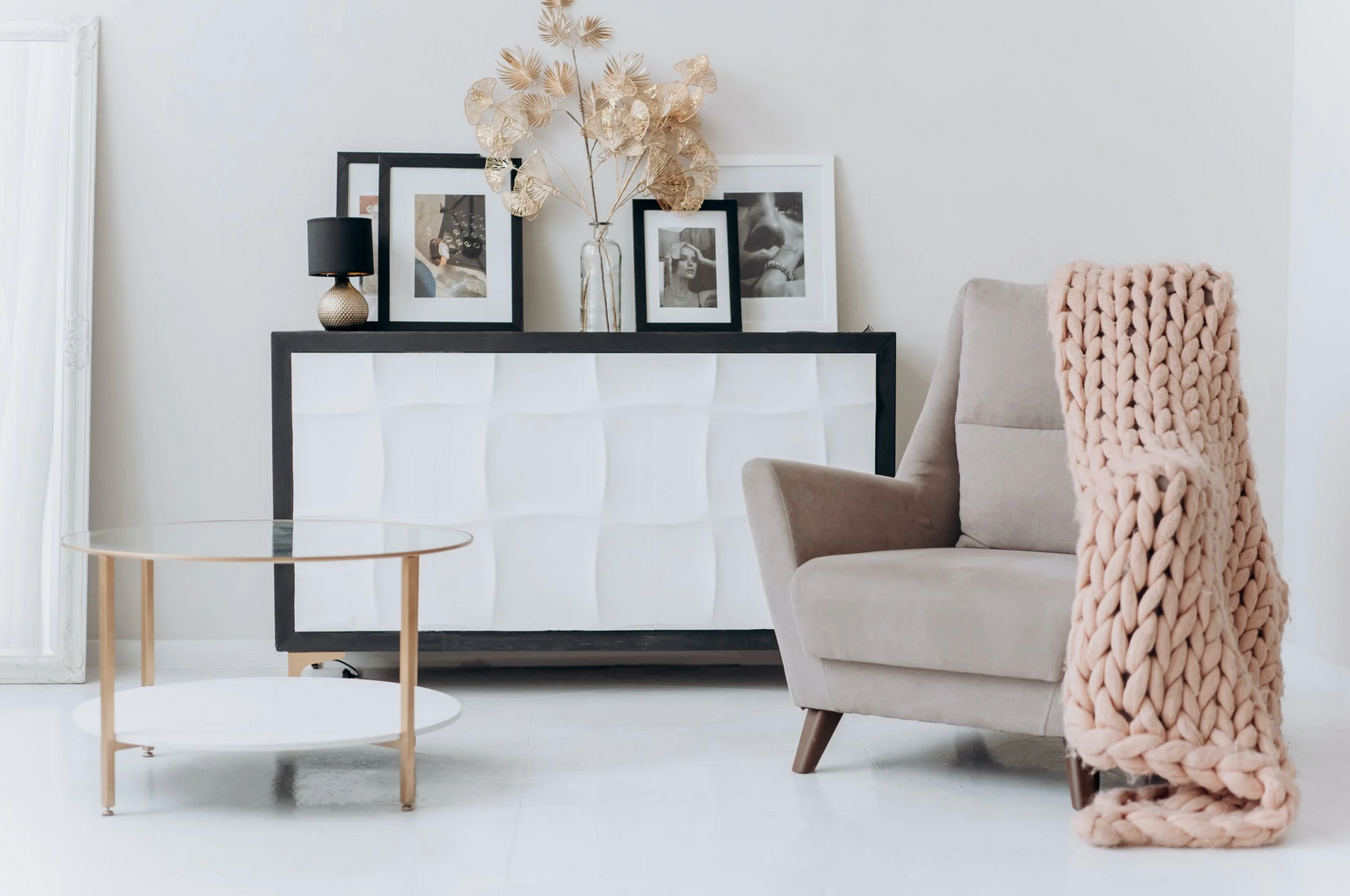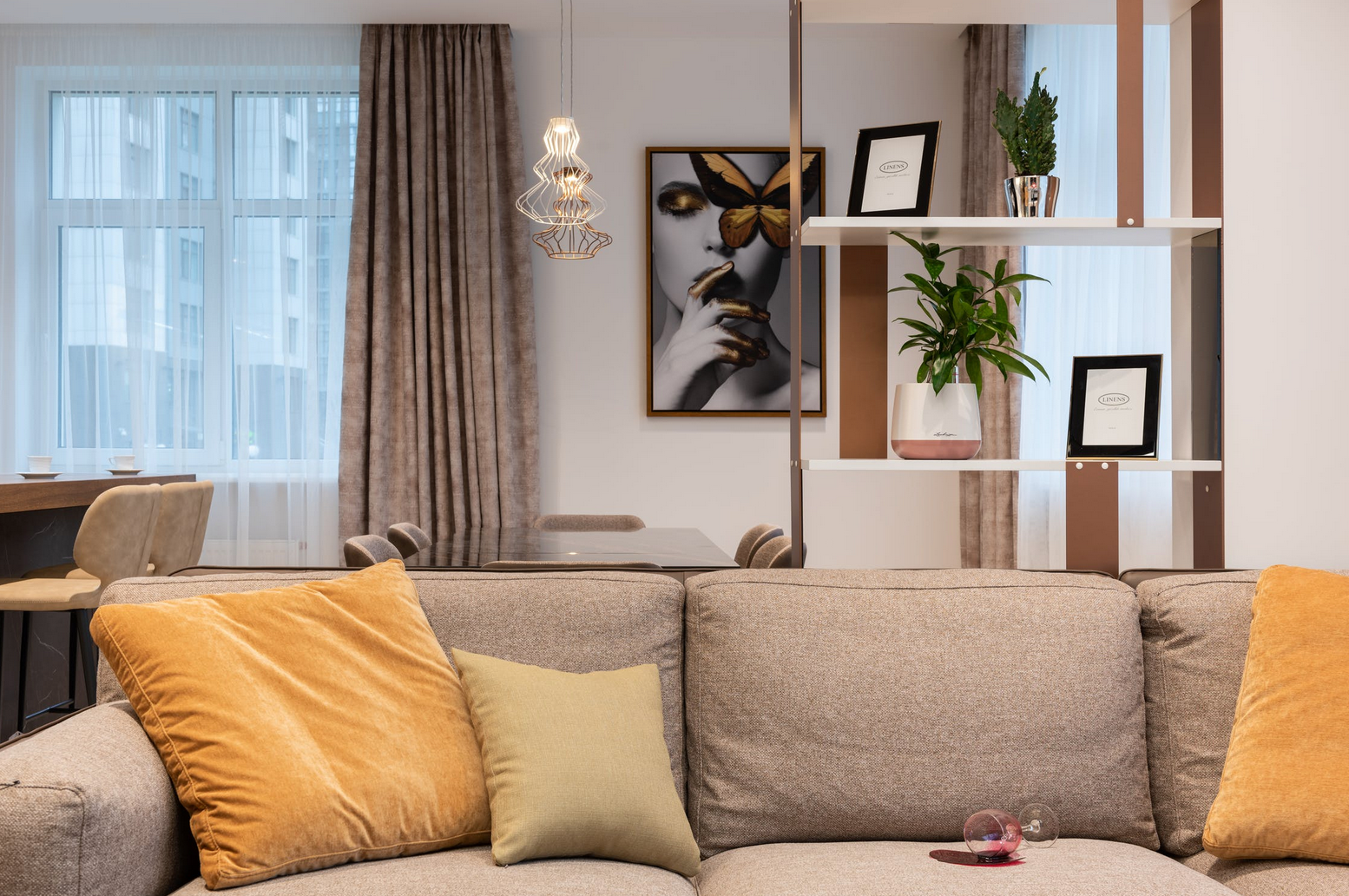It sounds like a no-brainer, doesn’t it? Surely modern furniture is the sleek, shiny style we see in a bachelor pad, and mid-century is the heavy old pieces of yesteryear. However, it’s not like that at all. So what is the difference between modern vs. mid-century furniture, and which is best?
Modern Furniture
The modern style originated in the late 1800s and early 1900s, and while it reached its peak in the first part of the 20th century, it made a comeback in the 1950s.
Prior to modern design, the focus was on rich, heavy textures and dramatic pieces from the Gothic, Renaissance, and Victorian ages. Design then moved away from the nature-inspired art-nouveau dramatic style, and the ‘less is more’ philosophy ensued.
Modern style went on to become one of the most sought-after and recognizable design styles of its time. Modern furniture style focuses on:
- Clear lines and geometric shapes and angles
- Straight lines and edges
- Smooth surfaces
- Minimalism
- Warm, neutral colors
- Wide-open spaces
- Symmetry and balance
The style favors natural materials such as wood and metals with splashes of vivid color thrown in. The look is warm and inviting while remaining paradoxically sleek and minimal. Furniture has to serve a purpose, not just fill a space.
Mid-Century Modern Furniture
Mid-century modern, also called MCM, originated in the middle of the 20th century and has its roots in clean lines, function, and simplicity. Some claim that it reached its peak between 1945 and 1975, but others argue it started in 1933 and ended in 1965.
Regardless of the discrepancies in its origins, the style gained popularity in the post-WWII era as designers looked to combine the design of mass production with technology. They moved away from the ornate and detailed furniture style that dominated the time and created furniture that was simplistic and functional.
Nuclear families wanted sleek and useful furniture that embraced the new era. Key features of mid-century modern style furniture include:
- Clean lines
- Gentle curves found in nature
- Varied textures
- Simple design without ornate elements
- Vibrant colors such as orange, red, aqua, and yellow
The mid-century style was greatly influenced by Danish Modernism and Bauhaus, the German modernist school of arts. Mid-century style is often referred to as retro, and it has made a huge comeback. Bold-colored sofas and accessories are a classic mid-century look.
Differences Between Modern and Mid Century Furniture
There are similarities between the modern and mid-century furniture styles, which is to be expected as they were both popular in roughly the same time period. But there are also some distinct differences that make it easier to tell them apart.
Modern styles have these features:
- Light wood
- Muted tones with minimal splashes of color
- Elegant without imperfections
- Less ornate
- Clean, smooth, and finished edges
- Natural materials
Whereas mid-century styles will have these features:
- Bold
- Has warm wood, like walnut and oak
- Functional and sleek
- Not cozy
- Pops with bright colors
- A fusion of natural and man-made materials
As a general rule, when trying to remember the differences between modern and mid-century furniture, the mid-century style is more retro, and the modern style is similar to Scandinavian style.
Costs of Modern vs. Mid Century Furniture
Many modern pieces are readily available, and you can start your design with a beautiful, neutral-colored sofa and work from there. Modern style is generally more affordable as you can use timeless pieces that are less specialized than mid-century style elements.
In general, modern style is more minimal, and design is low-key with fewer accessories. Floors are generally bare with an occasional rug, and the lack of fuss and detail makes it affordable. Mid-century style features brightly colored artwork, rugs, and accessories, which add to the cost.
Is Modern Better than Mid Century?
Design style is incredibly subjective, and everyone has a different aesthetic that brings them joy. When comparing modern vs. mid-century styles, it’s important to note what the differences are and to decide which is better for your design style.
Mid-century is perfect for a funky, retro look, but there are some downsides when compared to modern style furniture:
- Mid-century style will date easily
- It doesn’t suit every home design
- The look is less cozy and relaxing
- It can feel cluttered if not done properly
Modern style is better than mid-century style in the following ways:
- The look is more timeless
- It’s warm and inviting
- The muted colors are calming
- It suits most homes
- It’s family-friendly
- It’s easy to create the look
- The natural, warm colors add light to the room
- The furniture is functional
While both styles have come back into fashion, when comparing modern vs. mid-century furniture, choose which one you like the best and focus on that one style.
Woodhaven Furniture — Timeless Style
To achieve a beautiful design aesthetic for your home, whether it’s modern vs. mid-century styles, you need to start with quality, well-made furniture. Woodhaven Furniture is an American-owned company, and we pride ourselves on creating affordable and long-lasting furniture that will bring you comfort and joy.
You don’t need to compromise on quality in place of affordability. Woodhaven Furniture gives you the best of both, teamed with stunning design and comfort.



